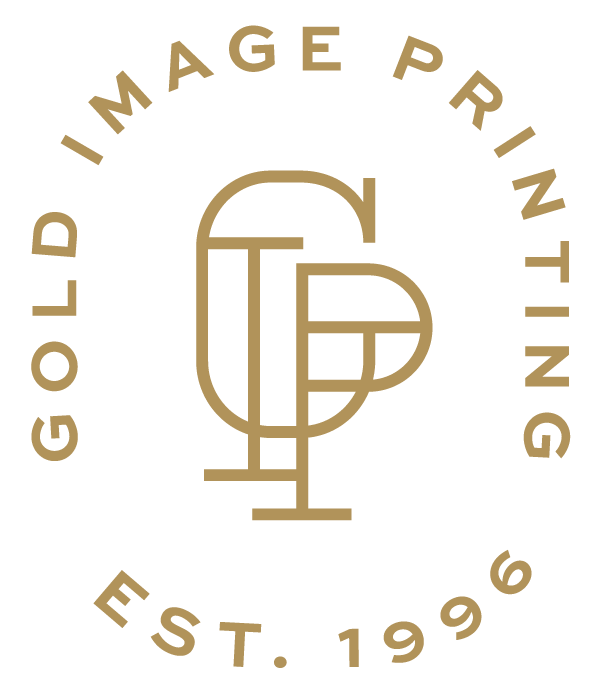Hanging posters has long been a contentious issue. Arguments about how to hang posters in dorm rooms, rental properties, and even places of business have raged back and forth for decades. Whether you’re a young adult looking to ensure your rental deposit gets returned, or a business owner trying to streamline in-store advertising changeovers, we’re here to put the debates to bed, and some of the tips and tricks we discuss on the way might just surprise you!
From the earliest lithographic posters of Jules Chéret in the 1880s bringing forth the modern age of advertising, to the iconic designs and movie posters that have graced the walls of millions of teenagers throughout the 20th and 21st centuries, through to the amazing quality of posters you can create when you consult the print guidelines available at Gold Image Printing, posters have had a storied history. What this history usually fails to mention, however, is how to hang posters without damaging them. There are two main approaches to poster hanging; semi-permanent adhesives and more permanent methods which generally involve making holes in the wall. Let’s take a look at the best techniques and the best way to apply them.
Important Steps for Poster Hanging Success
No matter what kind of wall you’re working with, there are some steps that will always be important when hanging posters.
Step One: Cleanliness
When thinking about how to hang posters without frames, it can be surprising how large a role cleanliness can play in your success. Sticky tack (also known as wall tack or blue tack) is a great, inexpensive option for hanging posters, but can leave grease marks or fail to stick properly if your hands or your wall aren’t clean beforehand, and even the best tape for posters can become less effective when dust or dirt get involved.
When hanging posters like the ones available at Gold Image Printing, we recommend washing your hands thoroughly before applying your poster adhesive of choice. You can also clean your wall with a 50/50 mix of vinegar and water, or a few drops of dishwashing soap mixed with water gently misted from a spray bottle. This can help remove dust and grease which may be invisible to the eye, but make sure you let it dry completely before proceeding! The same methods can also be used to clean off any residue left when you remove your adhesive.
Step Two: Ensure Flatness
The best way to hang posters on plaster walls is entirely flat. Unsightly bulges and furled corners can really spoil the aesthetic of a neatly hung poster, but with most posters being shipped rolled up in tubes for safety, they can be difficult to avoid.
While some might advise rolling the poster up in the opposite direction, this has the potential for disaster. Accidental folds or creases can make a poster look cheap or unprofessional, but this can be avoided with one easy technique. Simply lay your poster flat and gently place a few weighty objects around the edges. Books are a great choice for this since they’re flat and unlikely to scratch or tear your poster. If you have any concerns about scratches, you can place the poster face down on a clean surface, and place your items on the back instead of the front. After a few hours, your poster should be lovely and flat, and ready for the wall.
Step Three: Choosing the Best Adhesive
The method you choose to hang your poster really comes down to two factors: permanence, and damage mitigation. There are so many varieties of custom poster printing available, but the importance of choosing the best application method holds true for them all.
Hanging Poster Displays
Hanging poster displays are an excellent choice for businesses looking for posters they can move around and change without damaging, but they can also be useful for anyone! If you’re living in a home with picture rails, these hanging displays can be moved at a moment’s notice, without damaging the poster or your walls. A great choice for anyone who might be indecisive about where to hang posters in a room, and anyone who likes to regularly change up their posters.
Textured Walls
For those wondering how to hang posters on textured walls, sticky tack is a great way to create a barrier between your wall and poster which will help you avoid damaging anything. Diligence when preparing your wall, and understanding that cleaning any residue left behind when your posters are taken down may take a little more finesse, are key considerations with textured walls.
Regular Tape
Regular clear tape, while seemingly a good idea and certainly an affordable one, should generally be avoided when hanging posters. It can remove paint or rip wallpaper all too easily, and that’s to say nothing of the potential damage to your poster. There are plenty of options for removable mounting tape, which are generally a better choice for unframed posters, as well as masking or painter’s tape, which is very gentle on paper, but can leave behind some residue on your wall, which will need to be cleaned off.
Frames
When it comes to framed posters, there are some wonderfully simple solutions which are strong enough to handle the increased weight of a frame without the permanence of a picture hook, nail, or screw in the wall. Removable picture hooks, or universal frame hangers, usually have a listed maximum weight they can hold and are simple to install and remove just by following the instructions on their packaging.
Permanent Posting
Those looking for a more permanent poster hanging solution should either look for specific picture-hanging hooks, or screws with a larger head. If a corkboard is available, simple push pins might be a straightforward solution which leaves your wall unmarked, but the downside is that you will cause irreparable damage to your poster.
Step Four: Application of Your Chosen Adhesive
Once everything is nice and flat, you’ve cleaned your surface, and you have your mounting method ready, it’s time to finally get your poster on the wall!
If you’ve chosen a non-permanent method, first place a small amount of adhesive on each corner of your poster. Using too much in any area will lead to unpleasant lumps and bumps, which can be especially unsightly if you’re putting up a large number of bulk offset posters.
To effectively spread the weight of your poster, and to help avoid any furled edges, you should also add some adhesive about halfway across the top and bottom, and half way down the vertical edges of your poster.
Either using a leveler (AKA bubble level, or leveler) or a visual reference point in the room, start by sticking one of the top corners and the center top of your poster to the wall. Make sure you’re holding everything taut, but don’t rip your poster after all your hard work!
Next, move on to the other top corner. With one hand gently applying pressure at the center top of your poster, smooth out the top edge and attach the remaining top corner. This is a great opportunity to check if your poster is straight.
Now, using the same method, move down, attaching the adhesive to the vertical portions of your poster, again ensuring everything is stretched nice and flat before fully applying pressure to each section of adhesive.
Finally, you can repeat this method for the lower third of the poster, once again beginning from a corner and working your way across. By the time you get to the final corner, you should find it almost perfectly in place, and you can stand back and admire your beautiful new artistic decoration. If you’ve decided on a more permanent method, invest in (or borrow) a stud finder. Once a stud has been found, a hole should be drilled into the wall slightly smaller than the screw or screw-tipped poster hook you’ll use. It is recommended at this point to use a plastic screw anchor to ensure your wall isn’t damaged by the weight of your hanging poster. The downside of these more permanent solutions is a hole in the wall. Large posters hung in this way may require two hooks, in which case a spirit level should be used to ensure they are in a perfectly straight line. If you’re not sure if your poster qualifies as large, a guide to standard poster sizes, like this one available from Gold Image Printing, should be consulted.


